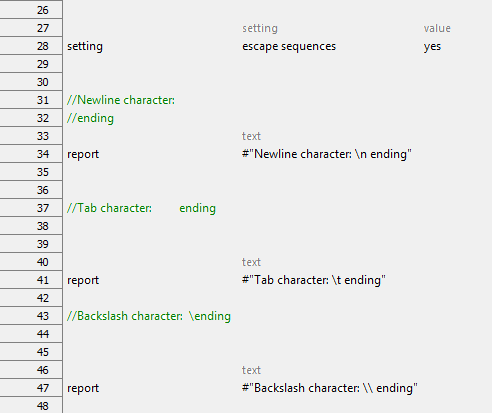escape sequences
Description
Determines whether, during test execution, escape sequences should be supported during string processing.
Allowable values
yes/true
Executes automated tests with support for escape sequences.
no/false
Executes in the legacy mode. That is, character strings that would otherwise be treated as escape sequences are not given special treatment.
Default value
no/false
Notes
In order to maintain backward support for legacy test procedures (those prior to TestArchitect version 8.2), the default value of the escape sequences setting is No/False. However, for new tests, it is highly recommended that you set escape sequences to Yes/True, to allow for the added functionality.
Escape sequences in TestArchitect are character combinations consisting of a backslash (\) followed by a letter or sequence of digits. The full set of supported escape sequences is a subset of those used by Microsoft Visual Studio. The following table lists those that are supported in the current version of TestArchitect.
Escape Sequence Represents \b Backspace \f Formfeed \n Newline \r Carriage Return \t Horizontal Tab \v Vertical Tab \\|Backslash \' Single quote mark \" Double quote mark \? Question mark \nnn The character whose ASCII value is nnn, where nnn is an octal number. For example, \042 represents a double quotation mark. Note that only codes in the range of \0-\377 (0-255 decimal) are supported. \xhh The character whose ASCII value is hhh, where hhh is a hexadecimal number. For example, \x22 represents a double quotation mark. Note that only codes in the range of \x0-\xFF (0-255 decimal) are supported. Escape sequences in TestArchitect must be used within expressions, that is, in strings that begin with a number (#) symbol.
Example
The following test procedure illustrates the use of some escape sequences to produce desired characters.
Test Lines
